Some of the world’s largest creatures live in the ocean. Unfortunately, they tend to hide from human eyes, so we often forget they’re there. We don’t remember that there are jellyfish with tentacles reaching 112-feet long, or that certain whales are actually the largest animals on Earth!
Here are amazing photos of and facts about some of the largest sea creatures. You won’t believe some of the animals who are lurking underneath the water’s surface!
Whale Shark
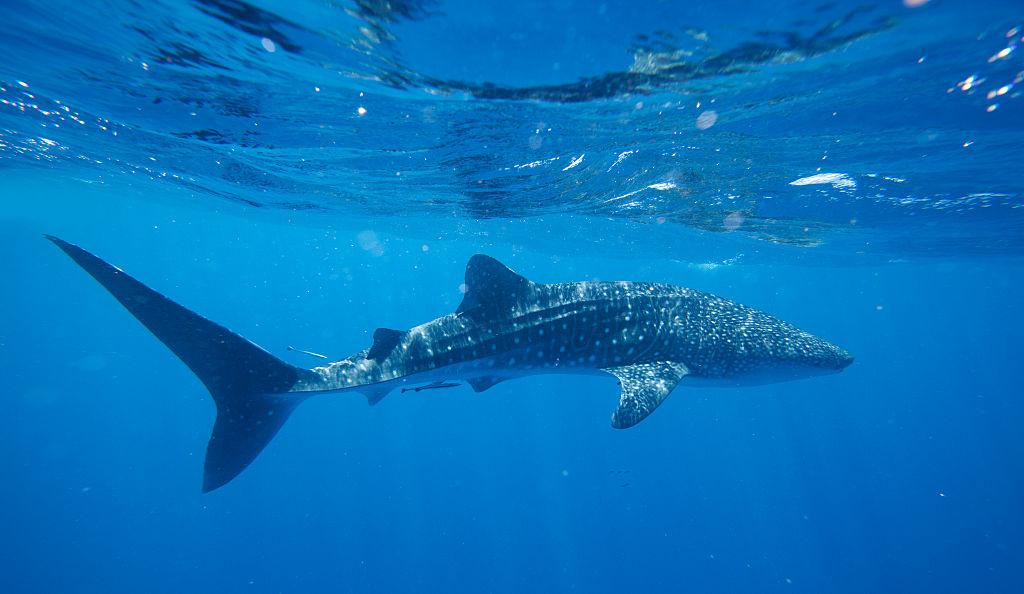
Sponsored Links
Whale sharks are characterized by their wide mouths that they use to filter feed on the bottom of the ocean. Each whale shark has unique pale grey speckled and striped skin. Because of these markings, the people of Madagascar call whale sharks marokintana, meaning “many stars.”
These mammals are quite docile, not minding human interaction, despite their massive size. While the average whale shark can reach up to 32 feet and 20,000 pounds, the largest confirmed was around 62 feet in length!
Manta Ray
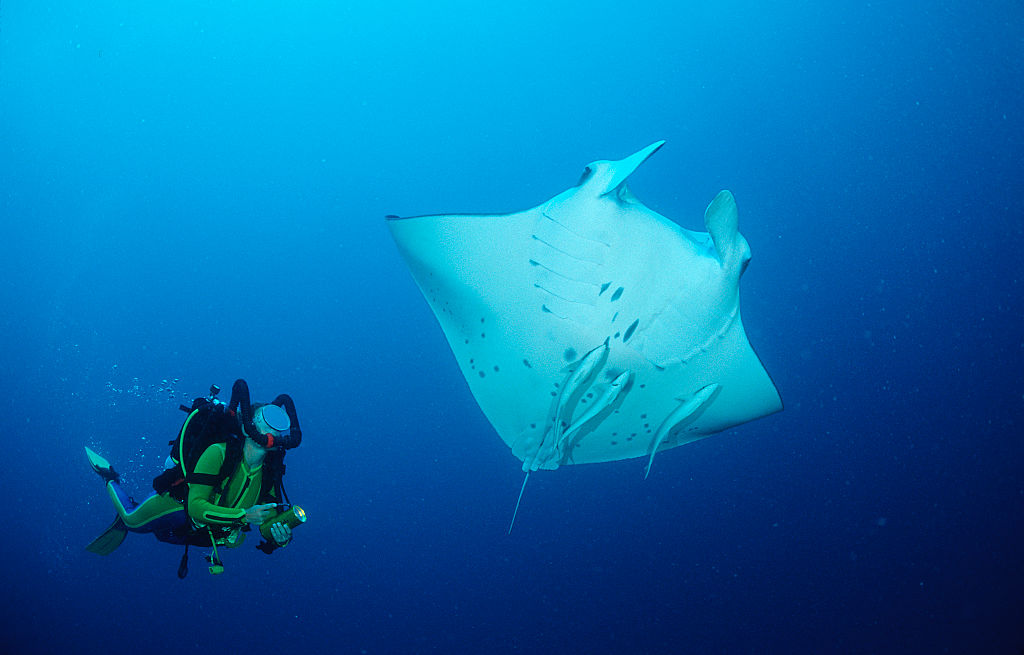
Also called “devilfish,” manta rays are known for their blanket-shaped bodies and the horn-shaped fins on their head. Manta rays are filter feeders and can reach up to 23 feet wide.
This creature has an interesting history with seafaring people. Legend had it that if a manta ray was spotted, the ship was going to go down to Davy Jones’ Locker. It was believed that the manta ray would latch onto the anchor of the boat and drag it down!
Blue Whale
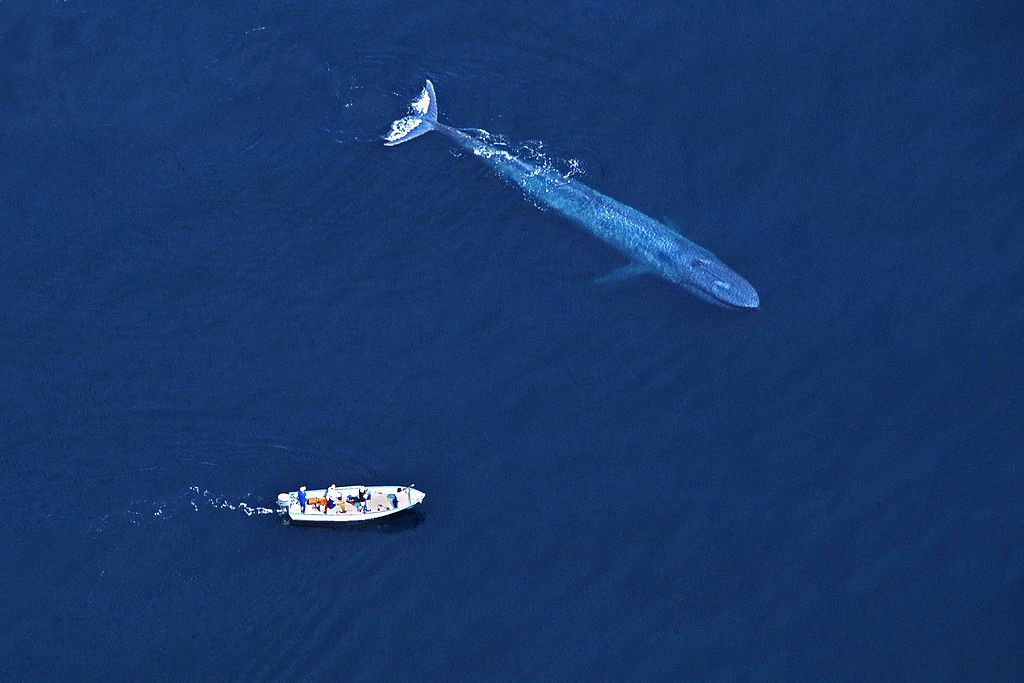
Before the International Whaling Commission banned the hunting of blue whales in 1967, they were almost an extinct species. The number of blue whales in the oceans today is around three to eleven percent of the estimated population in 1911.
Blue whales are known as one of the largest animals ever to exist, reaching 98-feet in length and around 190 tons. Interestingly, this species is one where the females are larger than males!
Sunflower Sea Stars
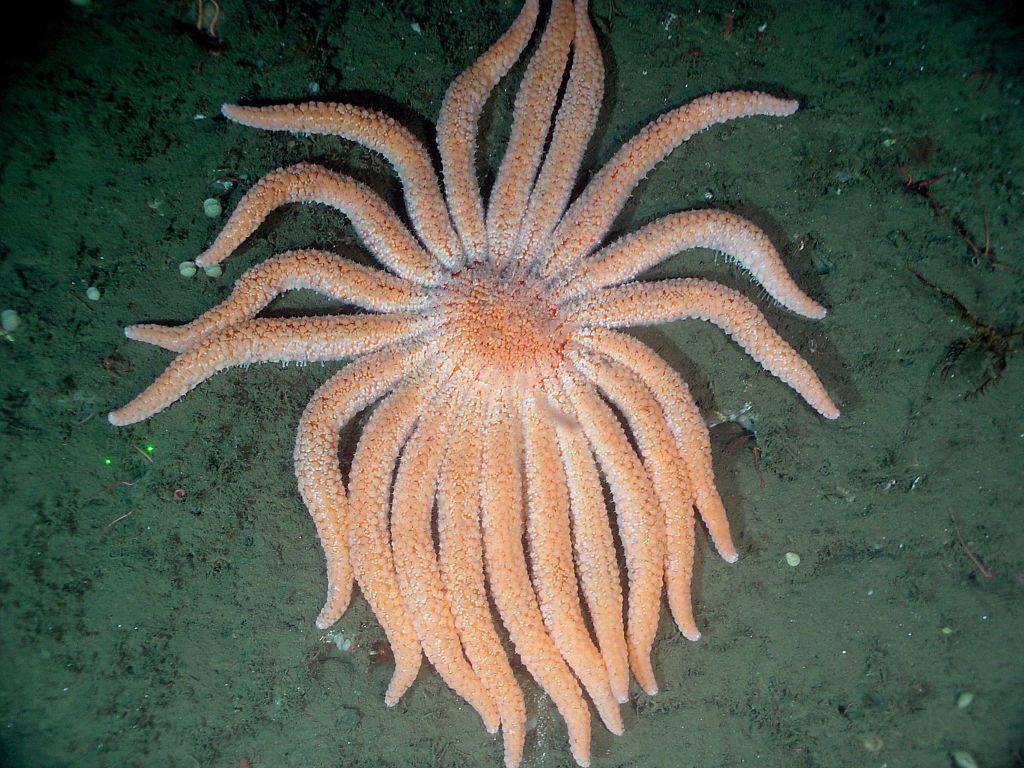
Sunflower sea stars are quite a sight, considering most starfish that people are privy to are no larger than their palm. This species, on the other hand, has 16 to 24 limbs and can reach an arm span of around three feet.
Unfortunately, the species has seen a rapid decline in population since 2013 due to sea star wasting disease. This disease is a direct result of warmer water temperatures, something the sea stars are not accustomed to since they prefer cooler Pacific waters.
Japanese Spider Crab
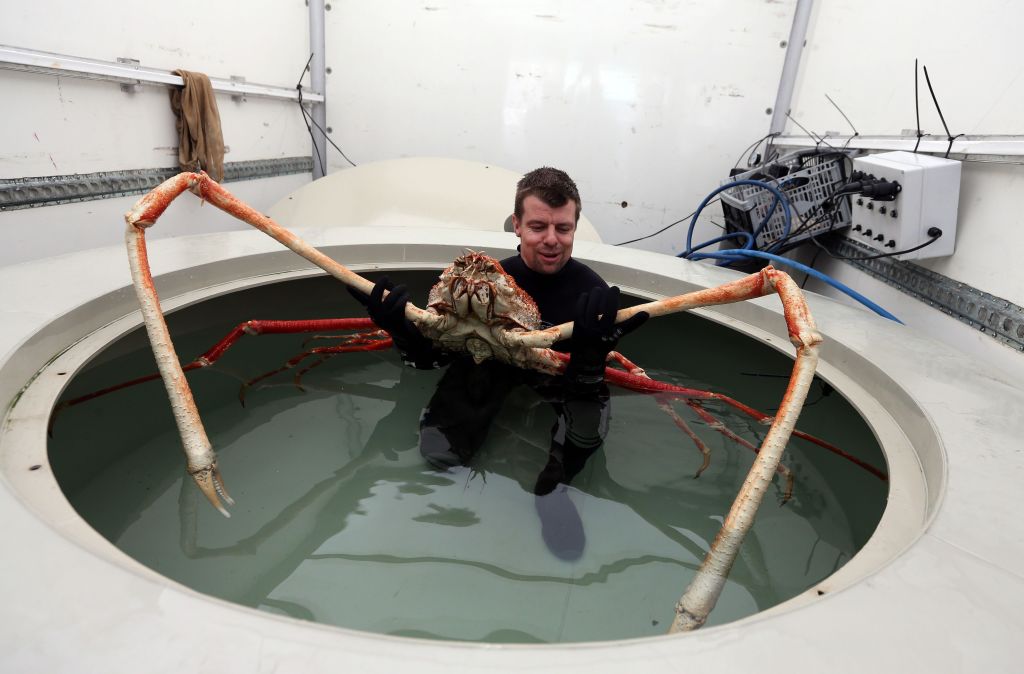
Considering the Japanese spider crab’s size, it’s hard to imagine that these creatures are actually gentle beings. From claw to claw, these crabs can reach up to 18-feet with a weight of 42 pounds!
This particular species only inhabits oceans around its native Japan, primarily off the southern coast of Honshu. In Japan, the spider crab is considered a delicacy, but there have been many laws put in place to help the diminishing population.
Caribbean Barrel Sponge
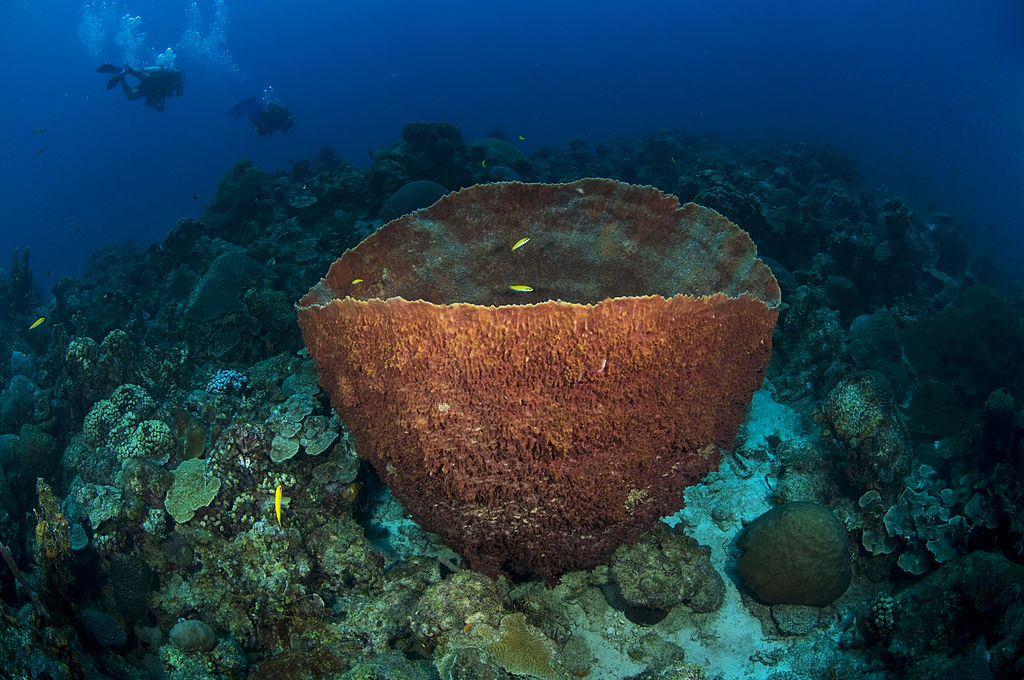
Known as the “redwood of the reef,” Caribbean barrel sponges can reach up to six feet in diameter. They can typically be found 33-390 feet under the Caribbean sea, nestled in the coral reefs.
This species of sponge is estimated to live for hundreds, maybe thousands, of years, making it one of the best-studied sponge species. They also make for a nice habitat for many fish species. If a diver knows where to look, it is certainly an amazing sight!
Giant Clam
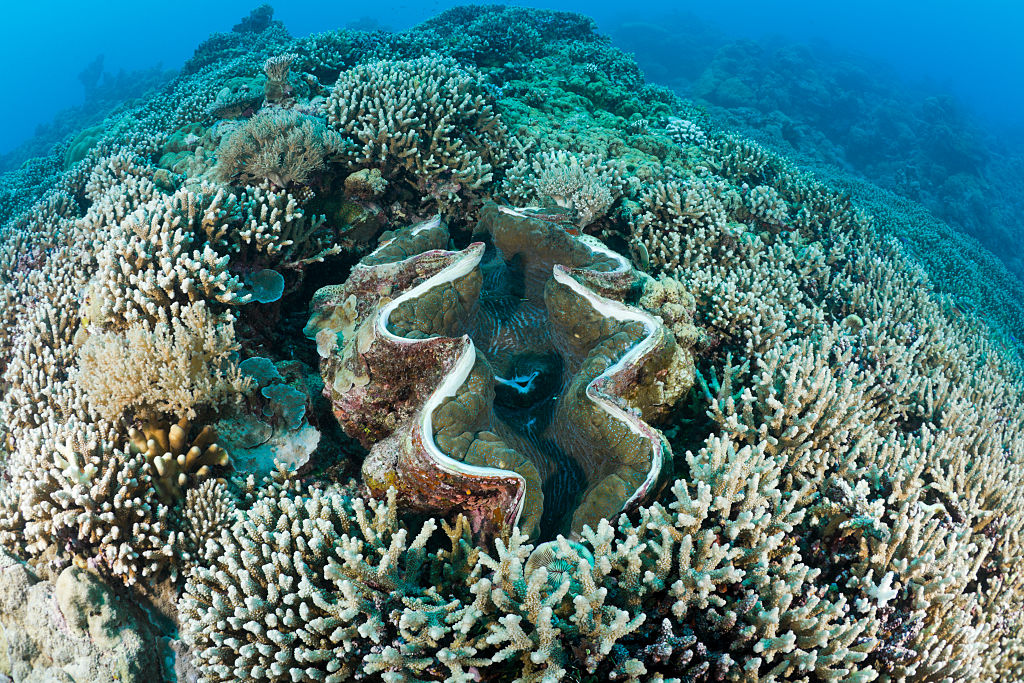
Documentation of giant clams dates back to 1521, with the Italian explorer Antonio Pigafetta. The species can measure up to 47-inches across, weigh up to 440-pounds, and can live in the wild for 100 plus years.
Historically, giant clams are misunderstood. For a long time, the species was thought to be dangerous, being able to close its large shell around people’s limbs. The action gave the creature the nicknames “killer clam” and “man-eating clam,” even though it’s not an aggressive species.
Giant Pacific Octopus
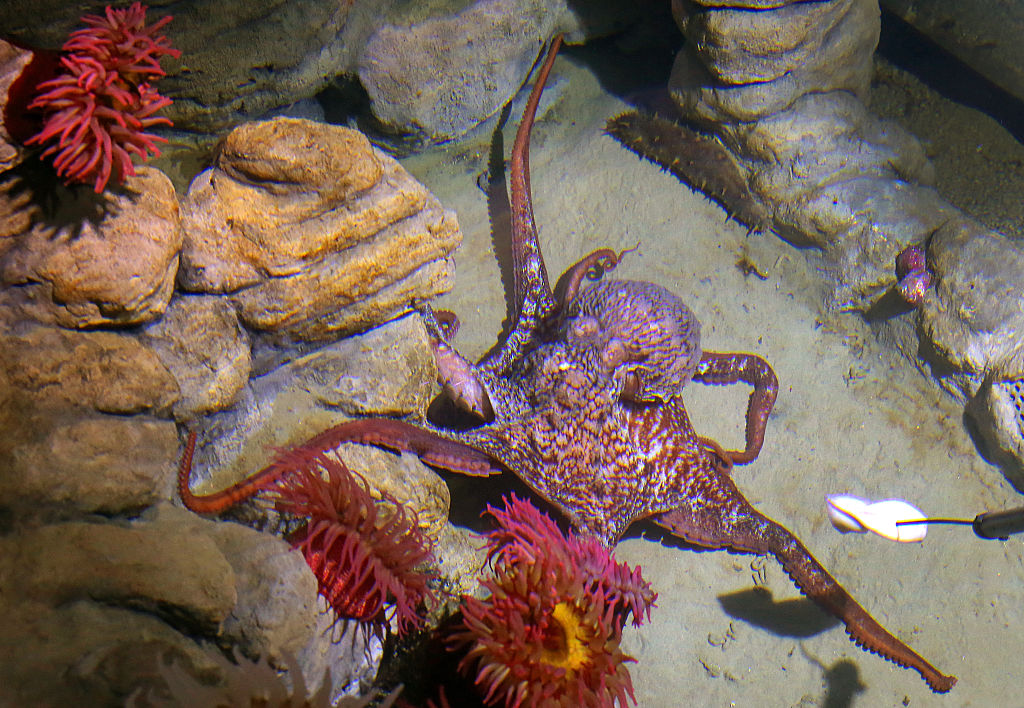
Giant Pacific octopi are huge, holding the record as the largest octopus species in the world. They have an average arm span of 16 feet while weighing about 110 pounds. Ironically, even though these are massive beings, giant Pacific octopi are introverts.
The species is very shy and doesn’t enjoy interaction with other animals, only leaving their dens in search of a meal. Otherwise, they’re homebodies with a nifty camouflage feature that allows them to blend in with their surroundings, both in color and texture.
Lion’s Mane Jellyfish
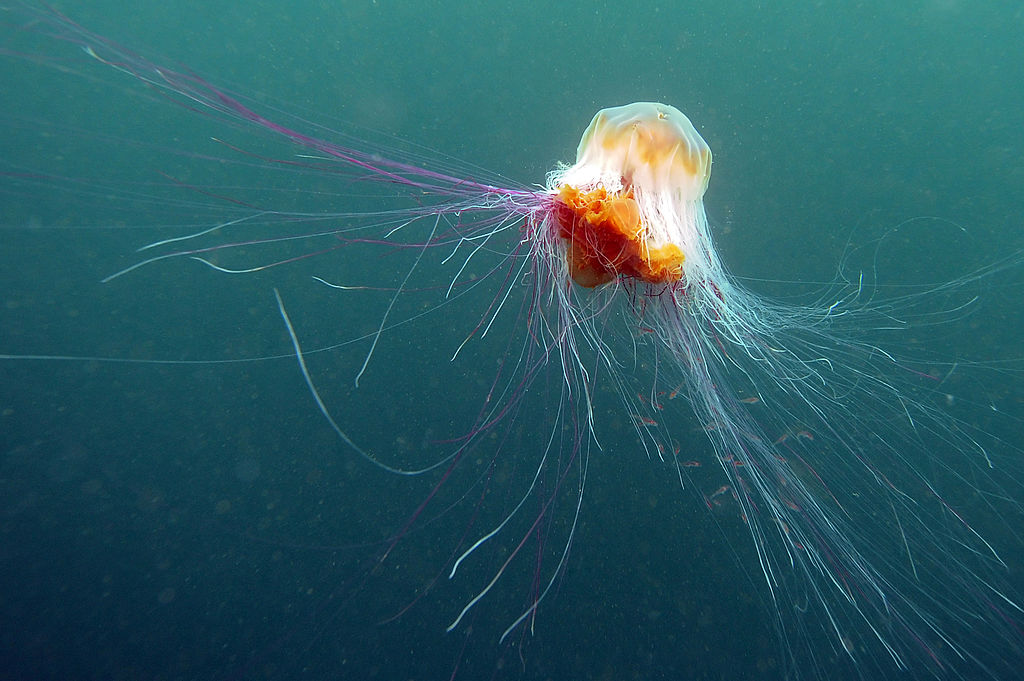
Lion’s mane jellyfish are known to be the largest species of jellies in the world. Also called the giant jellyfish or the aptly-named hair jellyfish, the largest ever recorded had tentacles that were 112-feet long with a bell diameter of 7 feet.
Scientist Alexander Agassiz was the one to record the measurements in 1865, off the coast of Massachusetts. Although lion’s mane jellyfish look intimidating, their sting only causes temporary discomfort and redness to humans.
Giant Isopod
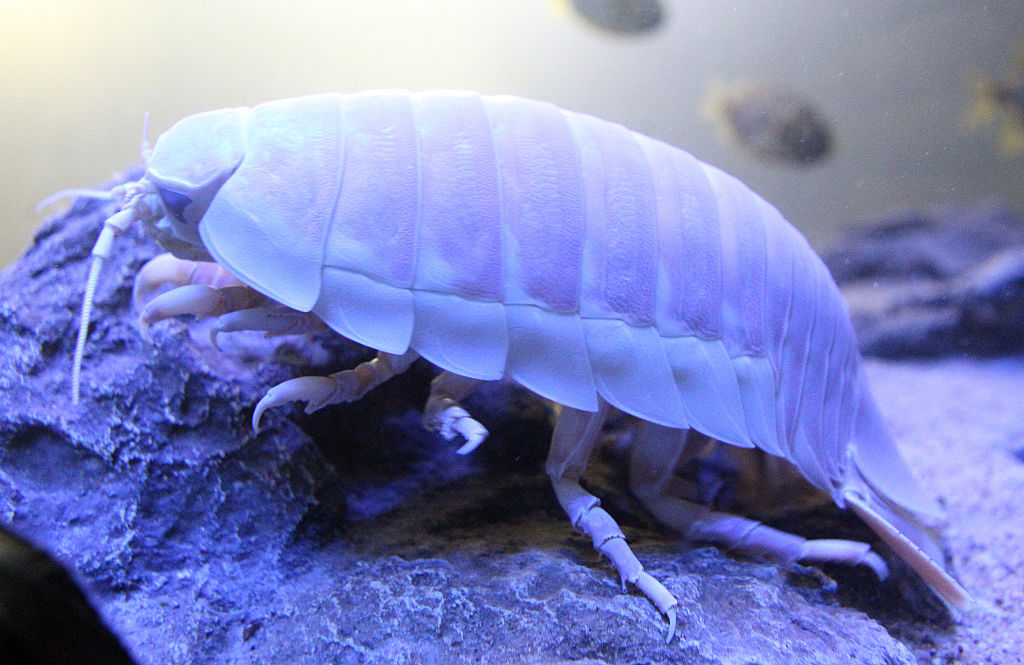
The giant isopod is a large underwater creature that is related to shrimp and crabs. It also resembles a gigantic underwater cockroach. “Supergiants” of the species can grow to be around 30-inches long and weigh close to four pounds.
This species is very active in the cold waters of the Pacific, Atlantic, and Indian Oceans. They’re typically left alone by fishers, but the giant isopods aren’t as generous. They usually go after the fish caught in nets!
Great White Shark
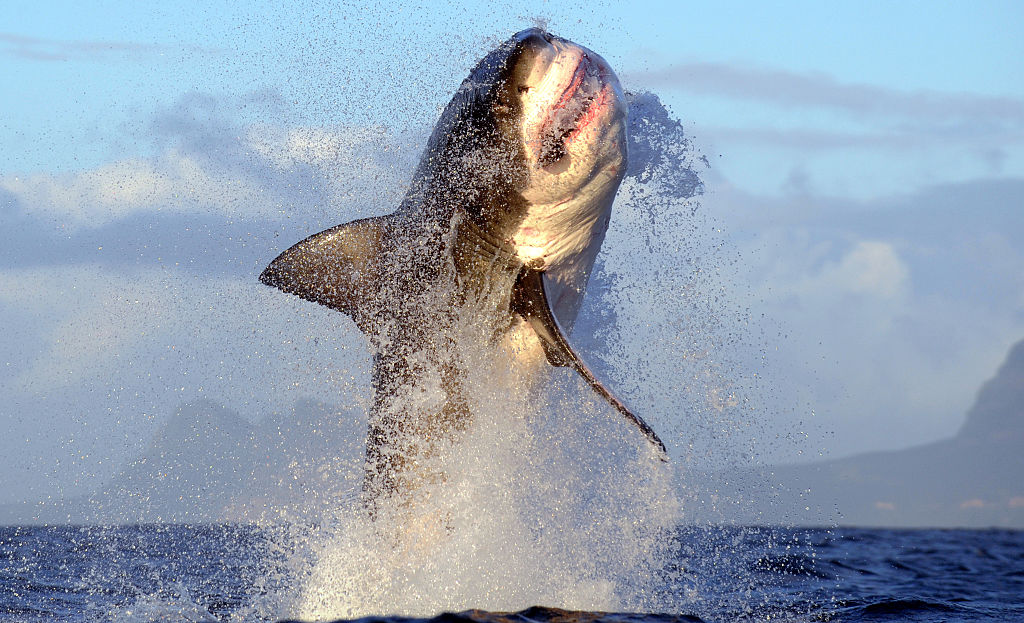
The great white shark is known for its size and speed. The larger members of the species can grow upwards of 20-feet in length, weigh around 4,200-5,000 pounds, and swim at a speed of 35 miles per hour. Although they typically swim at the surface, great whites are also able to reach a depth of 3,900 feet!
Great white sharks are depicted throughout media, most famously in Steven Spielberg’s film adaptation of Jaws by author Peter Benchley.
Southern Elephant Seal

Southern elephant seals are known for the elephant-like appendage on the top of males’ heads. The “nose” is used to produce loud roaring sounds, especially during mating season. These creatures are massive, weighing six to seven times more than a polar bear!
This species of elephant seal ranges in size depending on the region, but the largest measured is something to behold. The record-setting seal was measured at 22.5-feet long with an estimated weight of 11,000 pounds.
Giant Tube Worms
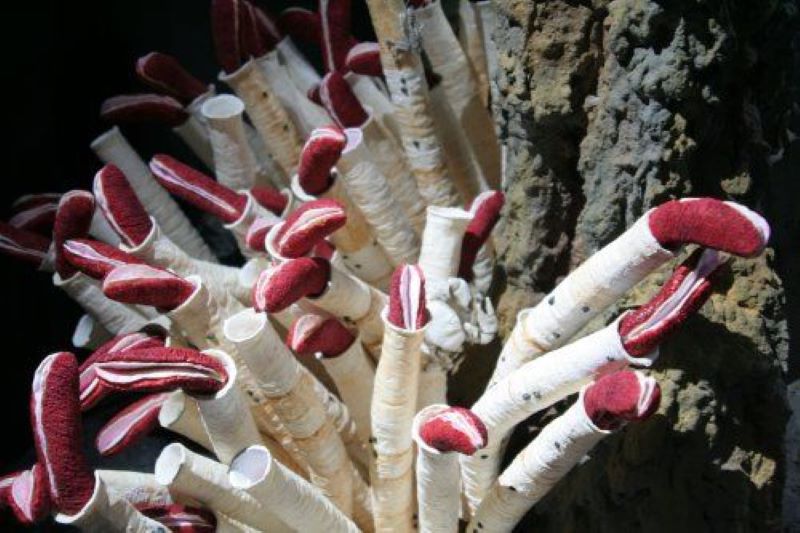
Giant tube worms were accidentally discovered in 1977, while a team of geologists was going to explore hydrothermal vents near the Galapagos Rift. The marine invertebrates can measure up to eight feet in length with a diameter of almost two inches. They’re also one of those crazy creatures that can survive in complete darkness.
As giant tube worms spend their lives attached to the seafloor, they live in symbiosis with other microorganisms. This means that the tube worms provide shelter while the surrounding bacteria produce sugars from gases for food.
Portuguese Man O’ War
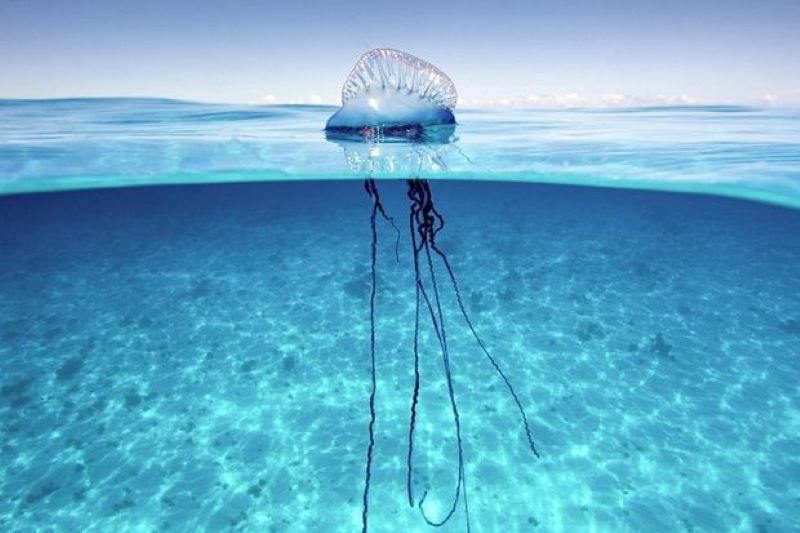
Even though this creature looks like a jellyfish and has a tendency to sting, the Portuguese man o’ war is not technically a jellyfish. Rather, it is called a siphonophore, a colony of organisms instead of a single multicellular creature. This means the Portuguese man o’ war is made up of hundreds, maybe thousands, of genetically-identical creatures!
The tentacles of the creature can reach up to 165-feet in length — pretty crazy for an organism that isn’t able to swim but rather takes the phrase “go with the flow” literally.
Sponsored Links
Orca Whale
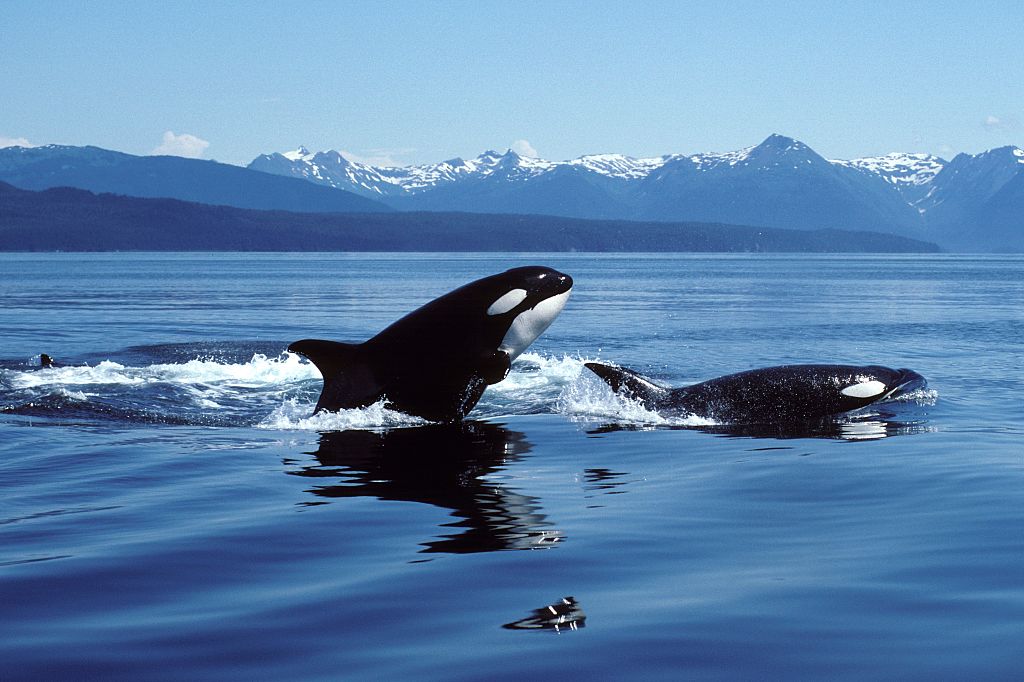
More formidably known as “killer whales,” orcas are considered the largest species of the dolphin family. They’re easily spotted due to their long dorsal fin and distinct black and white coloring. This species can measure up to 32 feet and weigh around six tons.
According to National Geographic, orcas are very sociable creatures and live together in pods, typically in the cooler arctic waters. They get their nickname “killer” because of their tendency to prey on any and all sea creatures.
Ocean Sunfish
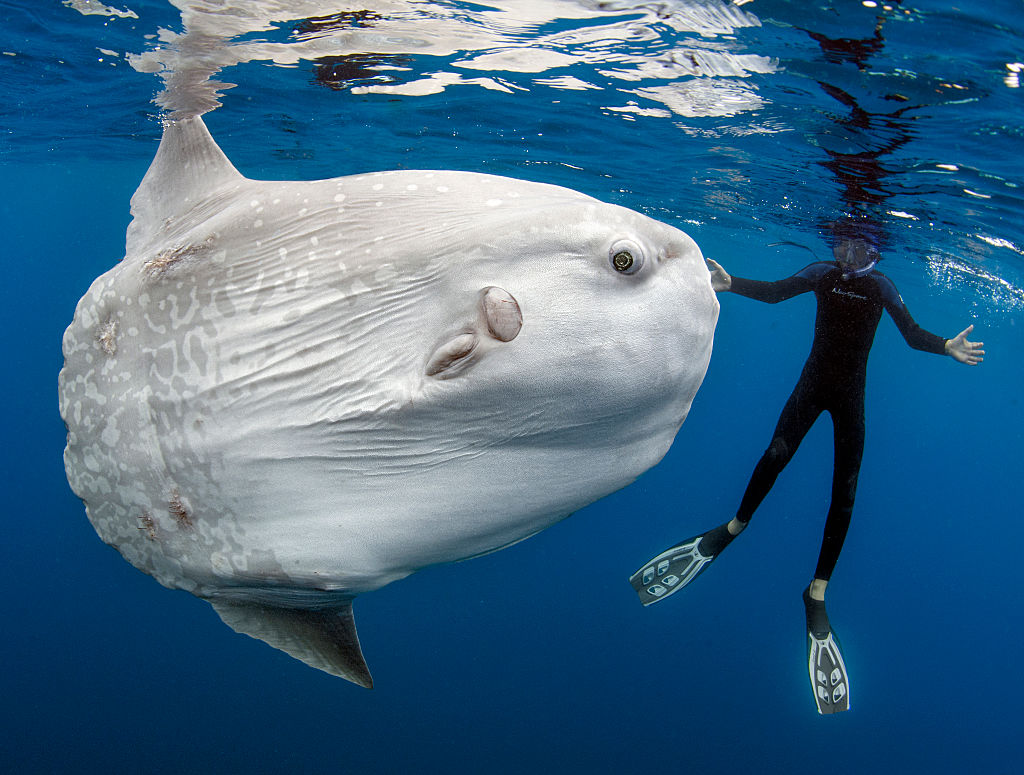
This funky-looking sea creature is called an ocean sunfish. This is the heaviest known bony fish in the world and can weigh up to 2,205 pounds during adulthood. When its dorsal fins are fully extended, a sunfish can expand its length past the typical six feet to around eight feet!
Even though it doesn’t look it, the sunfish does indeed have a tail; it’s just not what we normally think of as a tail. Instead of a typical fin, the sunfish has what’s called a pseudotail and is used as a rudder.
Fin Whale
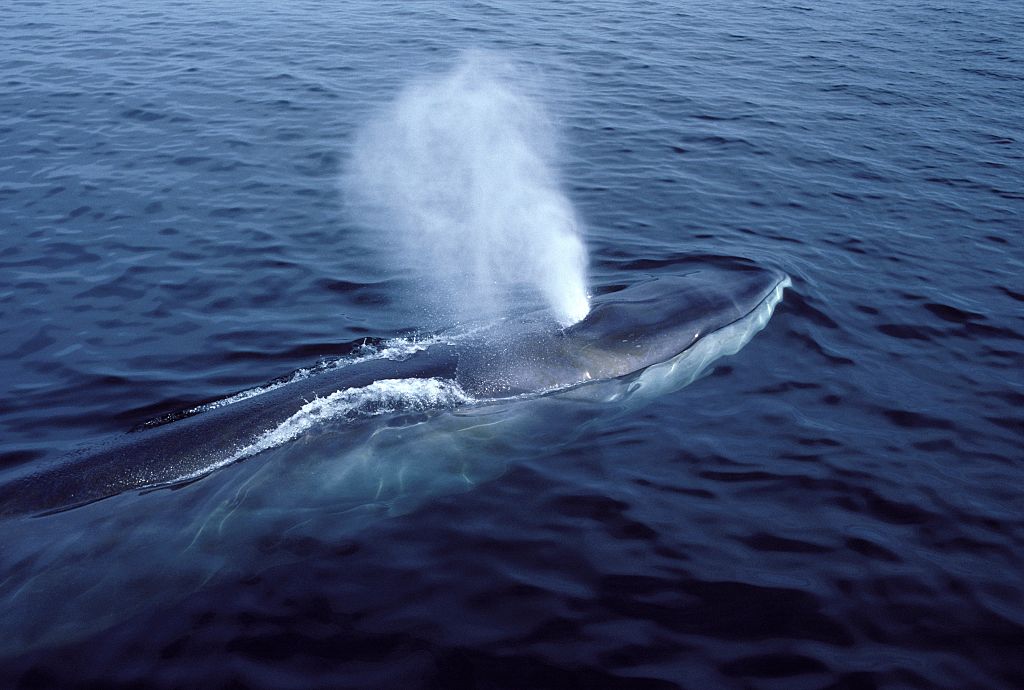
After the blue whale, the fin whale is the second-largest known species on Earth. The long and slender whale has a reported maximum length of 85 feet and a weight of 80 tons. Even with all of that weight, this creature is the fastest whale species.
Fin whales can reach up to 18 miles per hour and can even travel at 30 mph if the need arises. They like to live alone or with a tiny pod, and this species can live more than 80 years in the wild.
Marlin
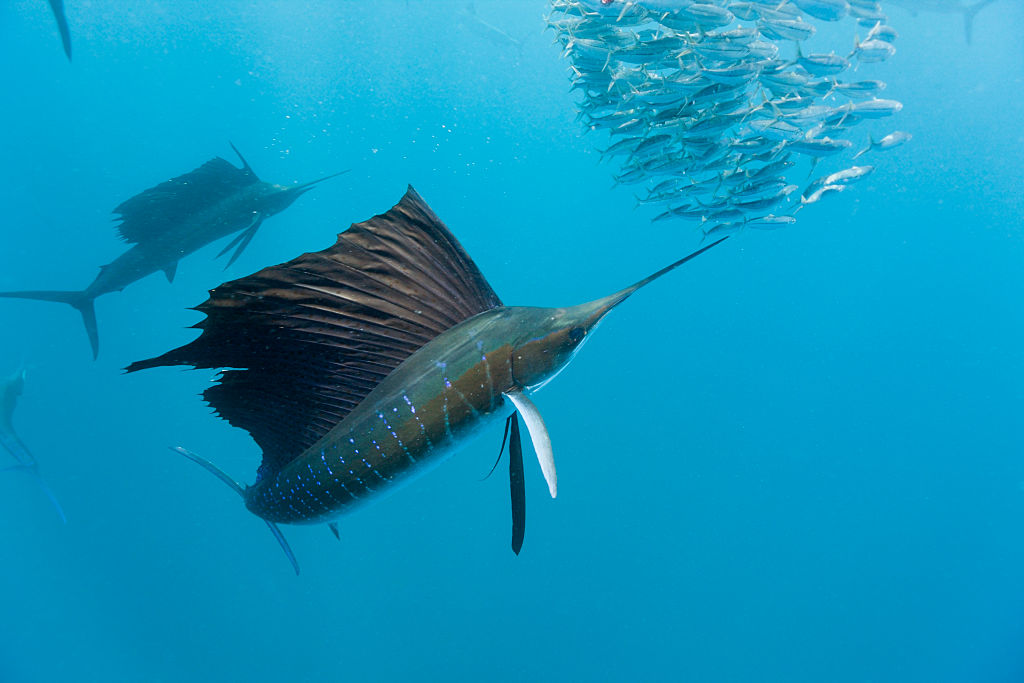
The marlin is best known for its beautiful rigid dorsal fin and its spear-like extended snout. It’s said that the common name “marlin” was derived from a sailor’s marlinspike, a tool that looks very similar to this fish’s “nose.” Marlins can measure up to 16-feet in length and weigh a whopping 1,803 pounds.
Aside from its popularity in sport fishing, the marlin is probably best known for its involvement in Ernest Hemingway’s novel The Old Man and the Sea.
Giant Squid
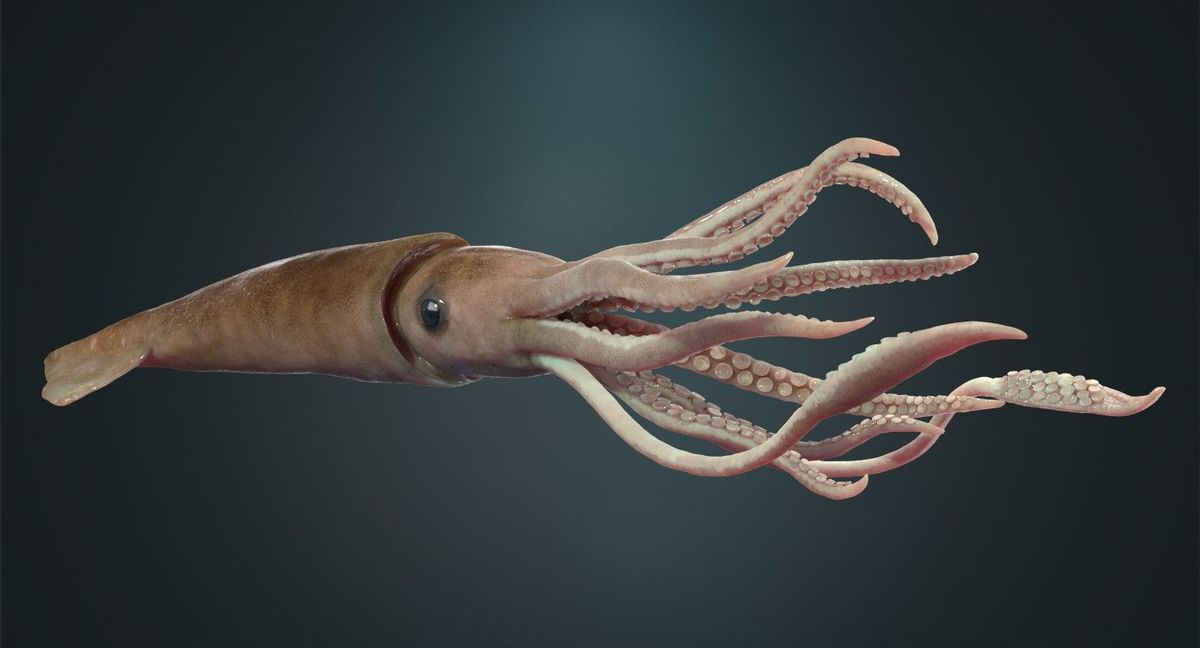
Giant squids are creatures with deep-sea gigantism, meaning they’re substantially larger than their shallow-water counterparts. The largest giant squid to be recorded was a female that measured 59-feet in length and weighed almost a ton.
The first recorded image of these creatures in their natural habitat didn’t take place until 2004, with the first film recording happening a few years later in 2012. Both instances took place off the coast of Japan. It wasn’t until 2019 that scientists filmed a giant squid in U.S. waters.
Giant Oarfish
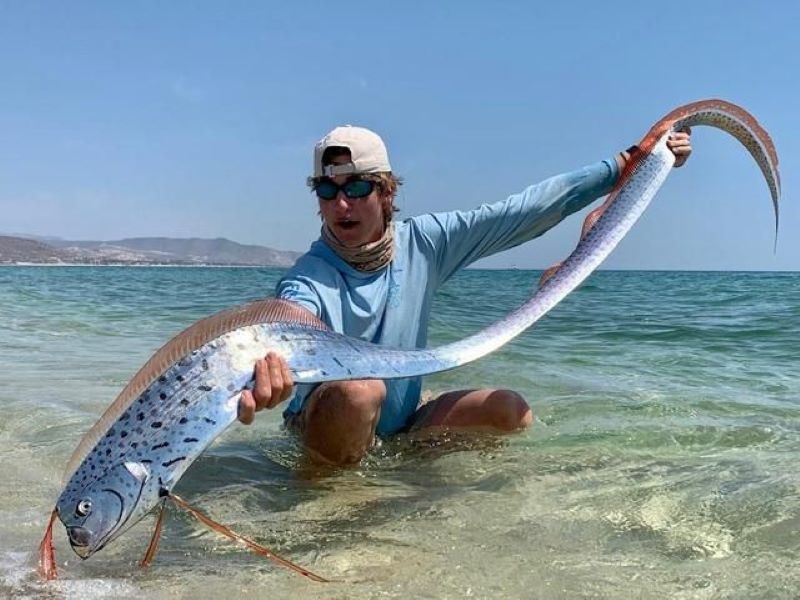
Although oarfish start no bigger than the span of a human thumb to pinky, they grow up to be massive. Giant oarfish are the largest bony fish in the world, reaching lengths up to 36 feet and weighing 600 pounds.
Oarfish are interesting-looking creatures because they have dorsal fins that run the length of their bodies, with long oar-shaped pelvic fins. This fish swims in a ribbon-like manner, making it the source of many false reports of sea serpent sightings.
Saltwater Crocodile
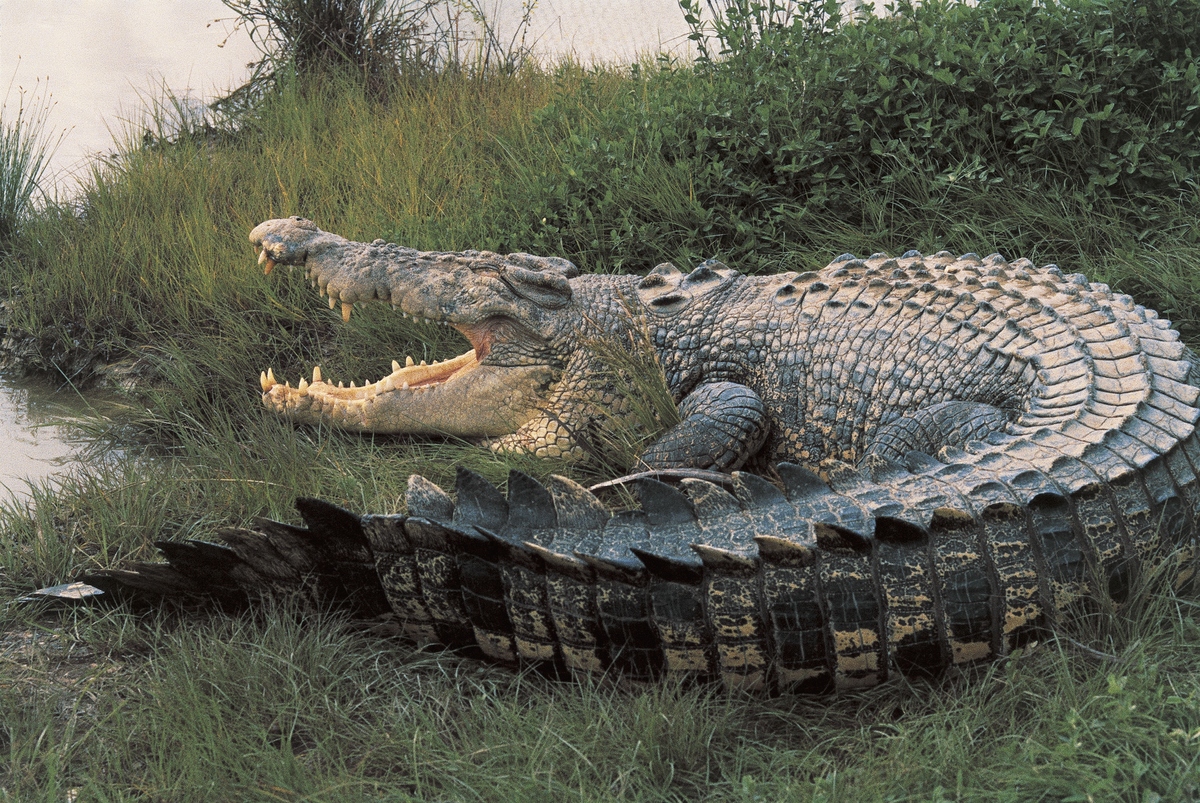
The saltwater crocodile is believed to be the largest of its species. Males can reach up to 20 feet in length and weigh upwards of 2,370 pounds. Salties, as they’re informally called, are considered to be dangerous for anyone who intrudes on their habitat, which means if you see one, its best not to get in the water!
Since they are large creatures, there has always been speculation about the actual size of the largest. Many hunter tales speak of finding a saltie that was 33 feet long!
Basking Shark
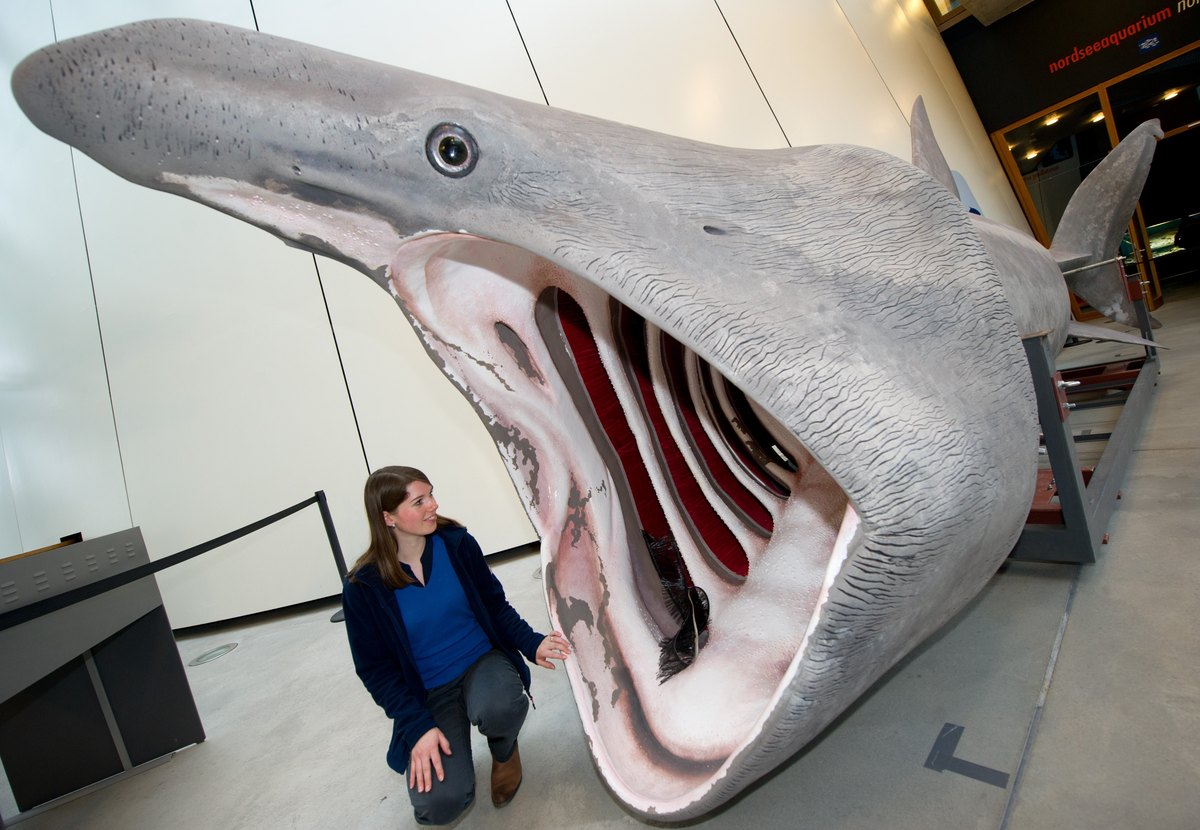
Coming in right behind the whale shark, basking sharks are the second-largest living shark species. These sea creatures are plankton-eating and have a megamouth that houses multiple rows of tiny teeth that curve backward. Basking sharks can reach up to 26 feet in length, making them look very threatening.
Despite their large size, basking sharks lead a very go-with-the-flow lifestyle. These creatures, while rarely seen by humans, are harmless and non-aggressive toward people.
Sperm Whale
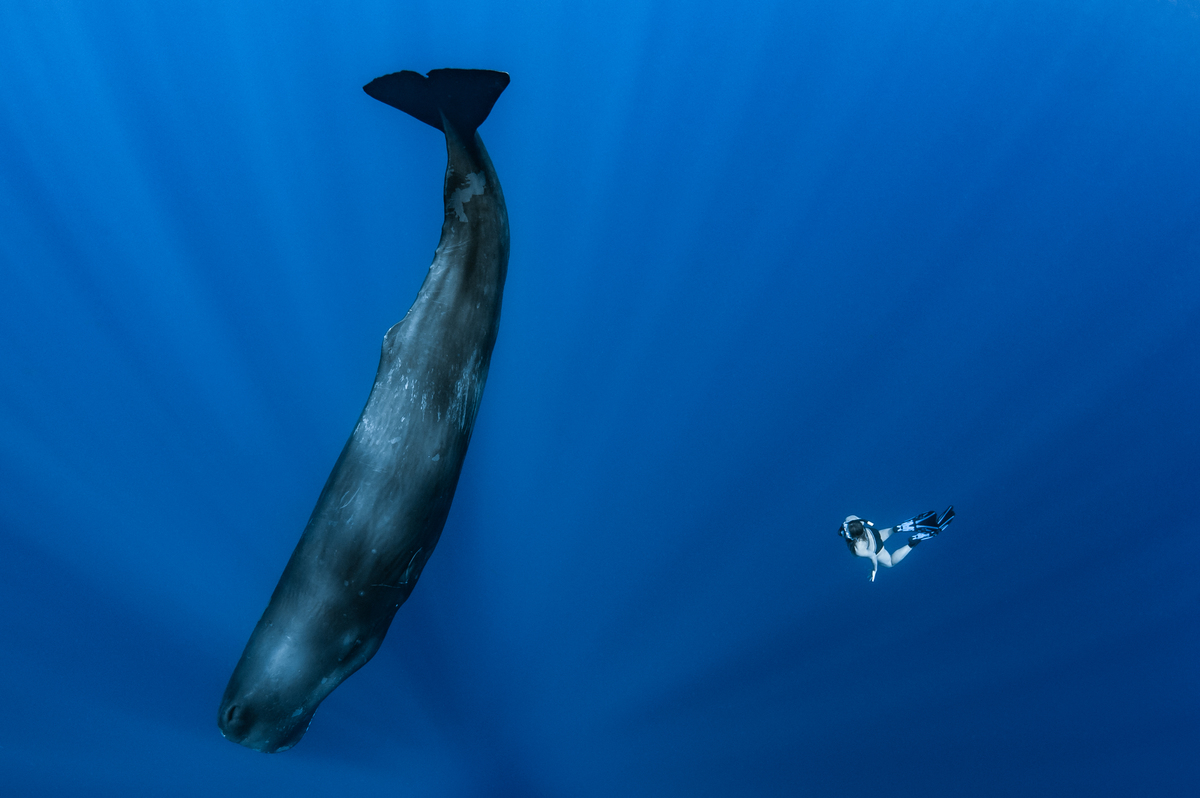
Sperm whales are the largest toothed whales, coming in at a solid 68 feet. While females will nurture their calves, male sperm whales live alone outside of the mating season. Birthing happens every four to 20 years, with the whales living to be around 70 years old.
This type of whale is often portrayed in media. One of the most famous stories of a sperm whale is Herman Melville’s novel Moby-Dick.
Greenland Shark
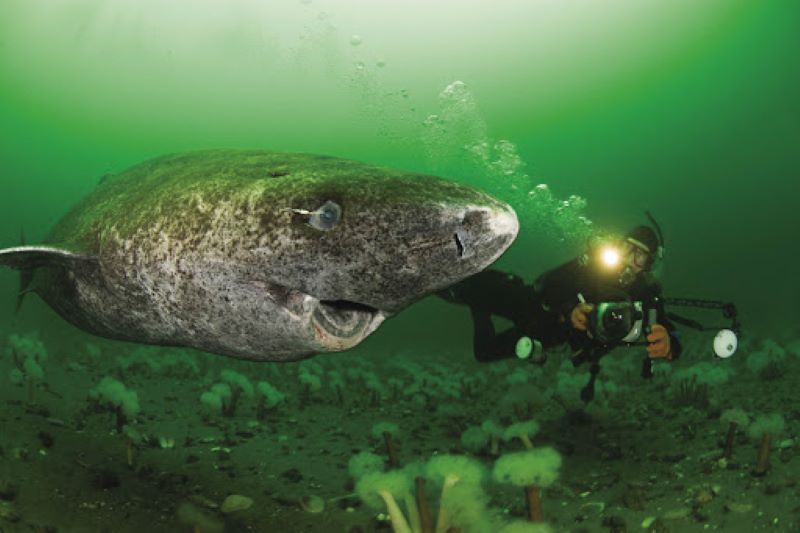
Greenland sharks, or grey sharks, are the vertebrate species with the longest known lifespan. These sea creatures can live up to 500 years! Greenland sharks can grow up to 21 feet and weigh 2,200 pounds.
This species of shark is the largest due to its preference for deep-sea living that makes their meat toxic. With a higher level of the chemical TMAO in its tissue, the species is undesirable as prey.
Leatherback Turtle
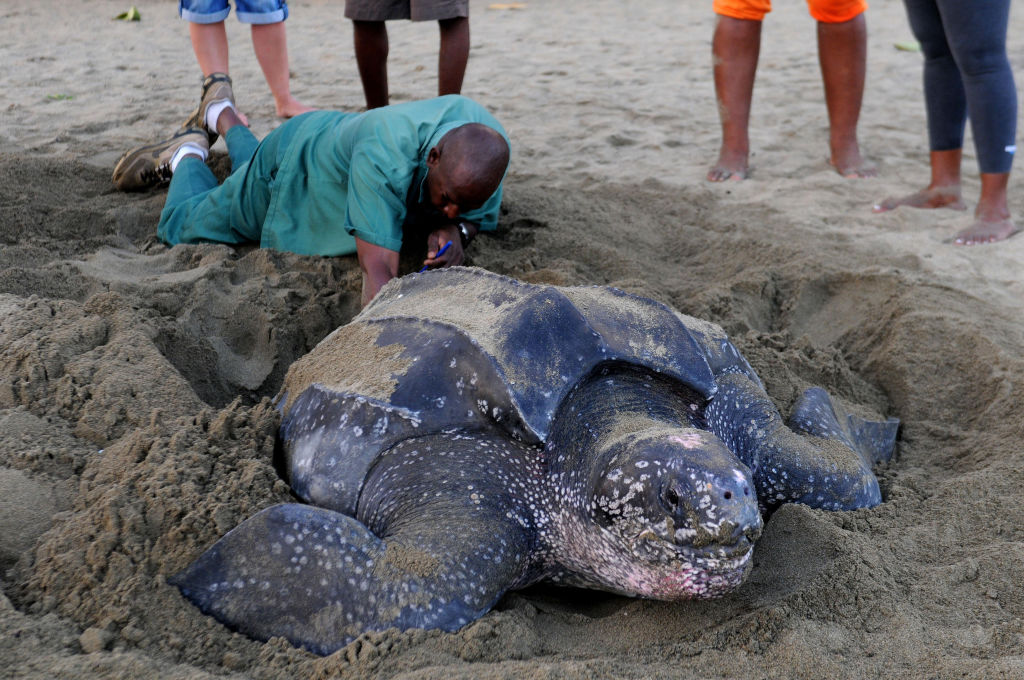
The teardrop-shell leatherback turtle is the largest living turtle species and the fourth-heaviest modern reptile. These sea creatures can grow up to a total length of seven feet and weigh a whopping 1,540 pounds.
Some form of this species has been around for over 110 million years, evolving into the modern-day leatherback turtle. These creatures prefer open ocean, following their jellyfish prey throughout the day in deeper waters and coming up to shallower waters at night when the jellies rise in the water column.
Bluntnose Sixgill Shark
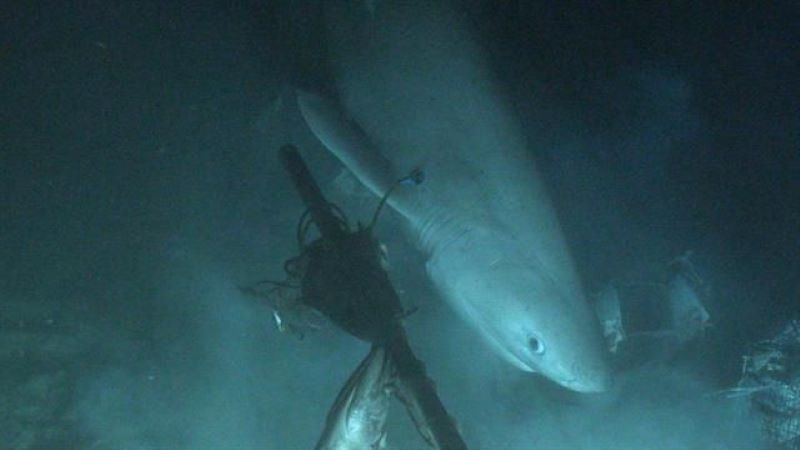
Also known as cow sharks, bluntnose sixgill sharks can grow up to 20 feet long. Their bodies are described as large with long tails and blunt noses. Unlike most sharks, the cow shark’s dorsal fin is located a bit further down their back, close to the caudal fin.
Despite its imposing size, the bluntnose sixgill shark is not threatening to humans unless provoked. Unfortunately, due to the popularity of sport fishing bluntnoses, the cow shark has been listed as Newly Threatened.
Walrus
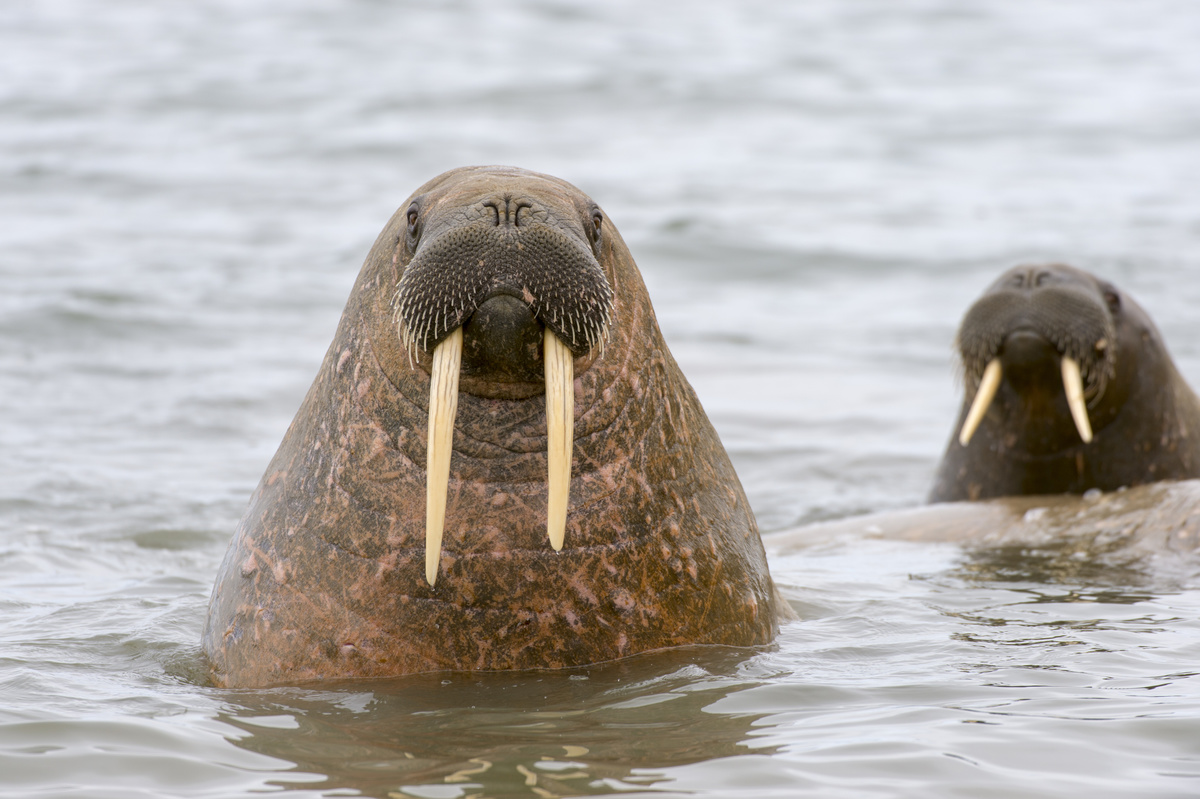
The funny-looking tusked creatures known as walruses can grow to weigh 4,400 pounds and be around 11.8 feet long! This species is divided into two subspecies, the Atlantic and Pacific. Both are equally massive.
Walruses are typically defined by their elongated teeth, also known as tusks. These teeth can be as long as three feet and weigh up to 12 pounds. Can you imagine having an extra 12 pounds of weight in your mouth?
Australian Trumpet

The Australian trumpet, also known as the false trumpet, is a species of sea snails. These creatures are considered to be extremely large for their kind, growing to 35 inches and weighing almost 40 pounds.
Even though the shell is quite popular among collectors, little is known about the actual species in regards to behavior. The shell is a spindle-like shape with one tall point. The color can vary but it is typically found to be a pale apricot color.
Nomura’s Jellyfish
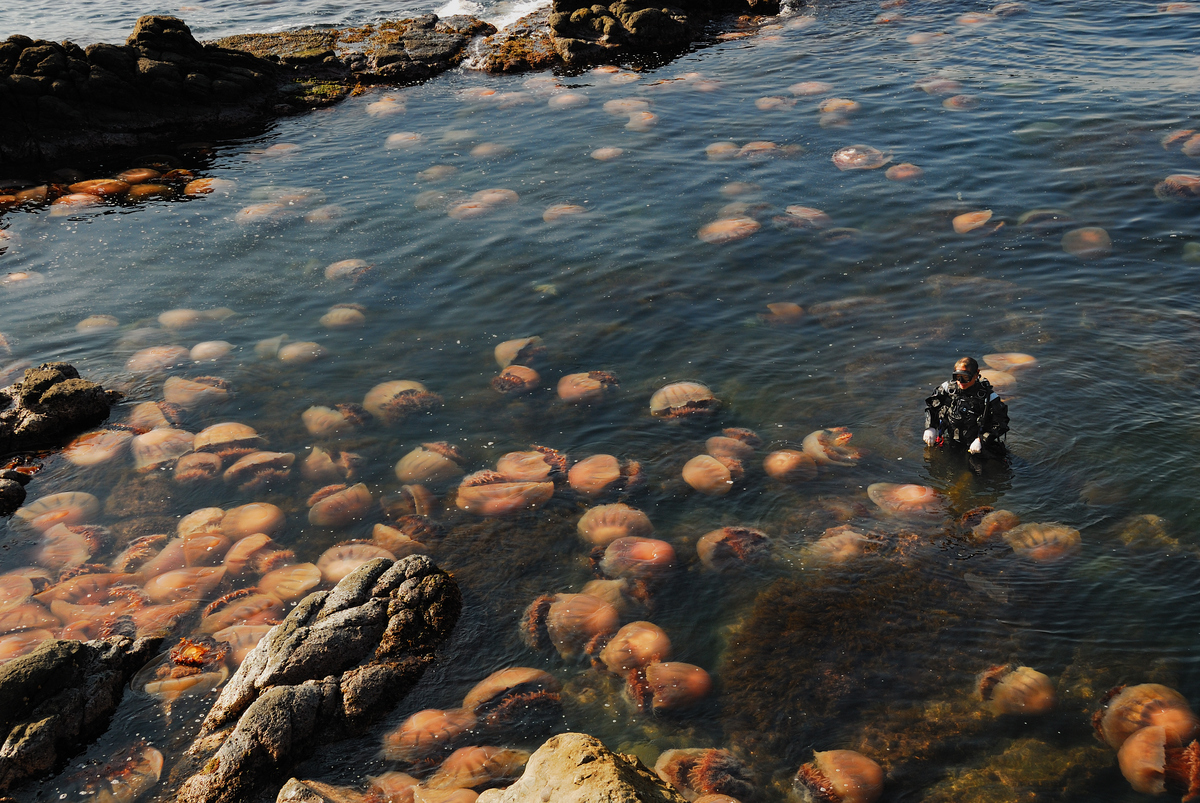
Nomura’s jellyfish are known to grow to be slightly larger than the height of an average man. These massive sea creatures can grow to be around six feet six inches in diameter and weigh up to 440 pounds!
This jellyfish species resides in the oceans between Japan and China, which have seen a population increase in the past 20 years. Nomura’s jellyfish were named after Mr. Kan’ichi Nomura, who spent a great deal of his life studying the then-unknown species.
Vampire Squid
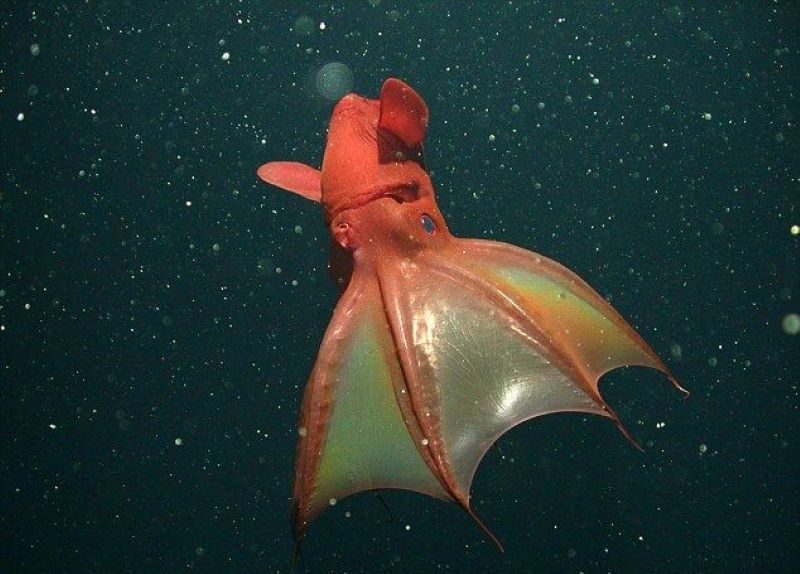
The vampire squid resembles both a squid and octopus. Reaching an average length of one foot, this species is described as having webbing between eight arms of suckers and red eyes. Its unique name comes from both of these traits.
Contrary to popular belief, the vampire squid does not actually feed on the blood of its prey. Its main source of food is something else entirely, detritus — marine waste that is a continuous occurrence in the deep ocean.
Sawfish
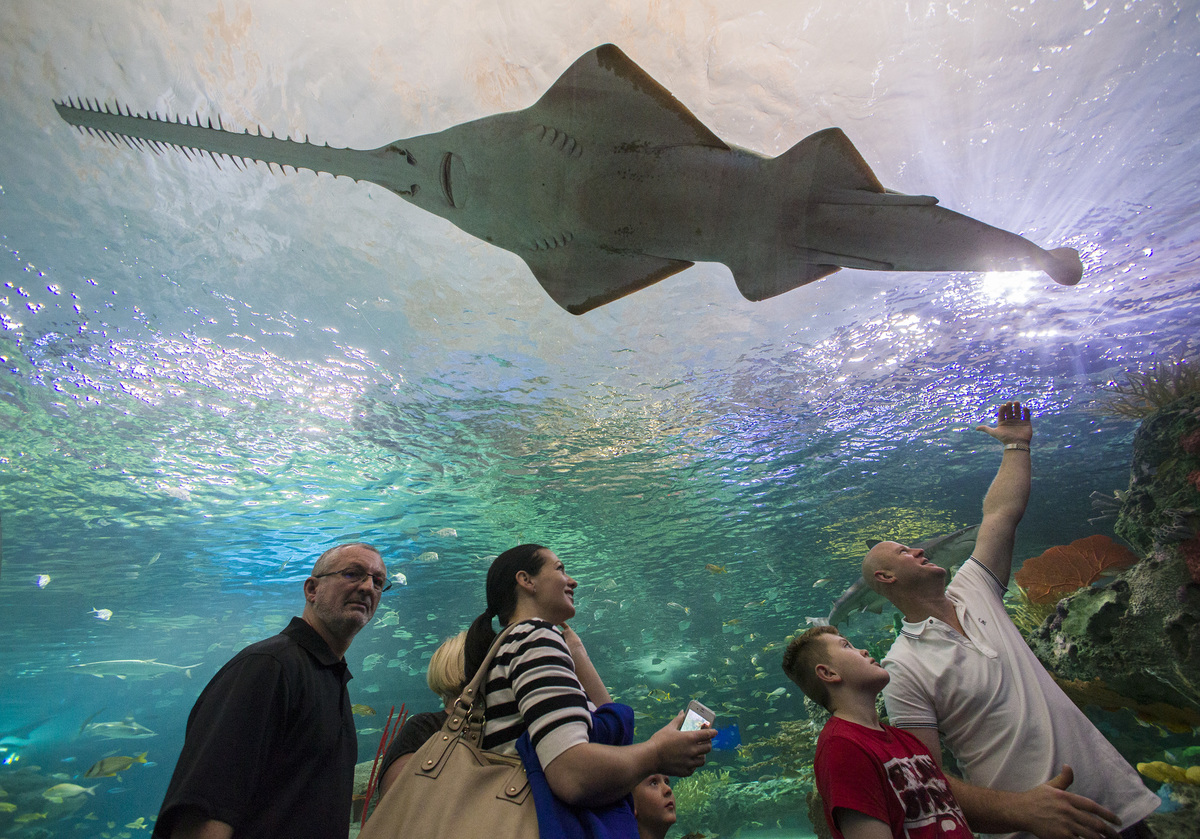
Sponsored Links
Known for their extended noses with teeth that resemble a saw, the sawfish is one of the largest fish in the sea. This species can grow up to 25 feet and can weigh up to 1,323 pounds.
This type of fish can be found worldwide and are not known to be threatening to humans unless they act in self-defense. Unfortunately, the five sawfish species are all on the Endangered or Critically Endangered lists by the IUCN.
